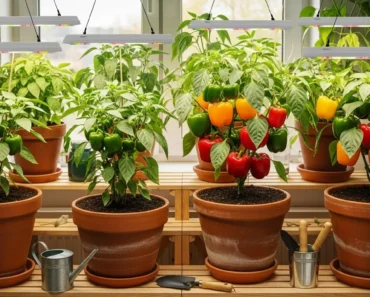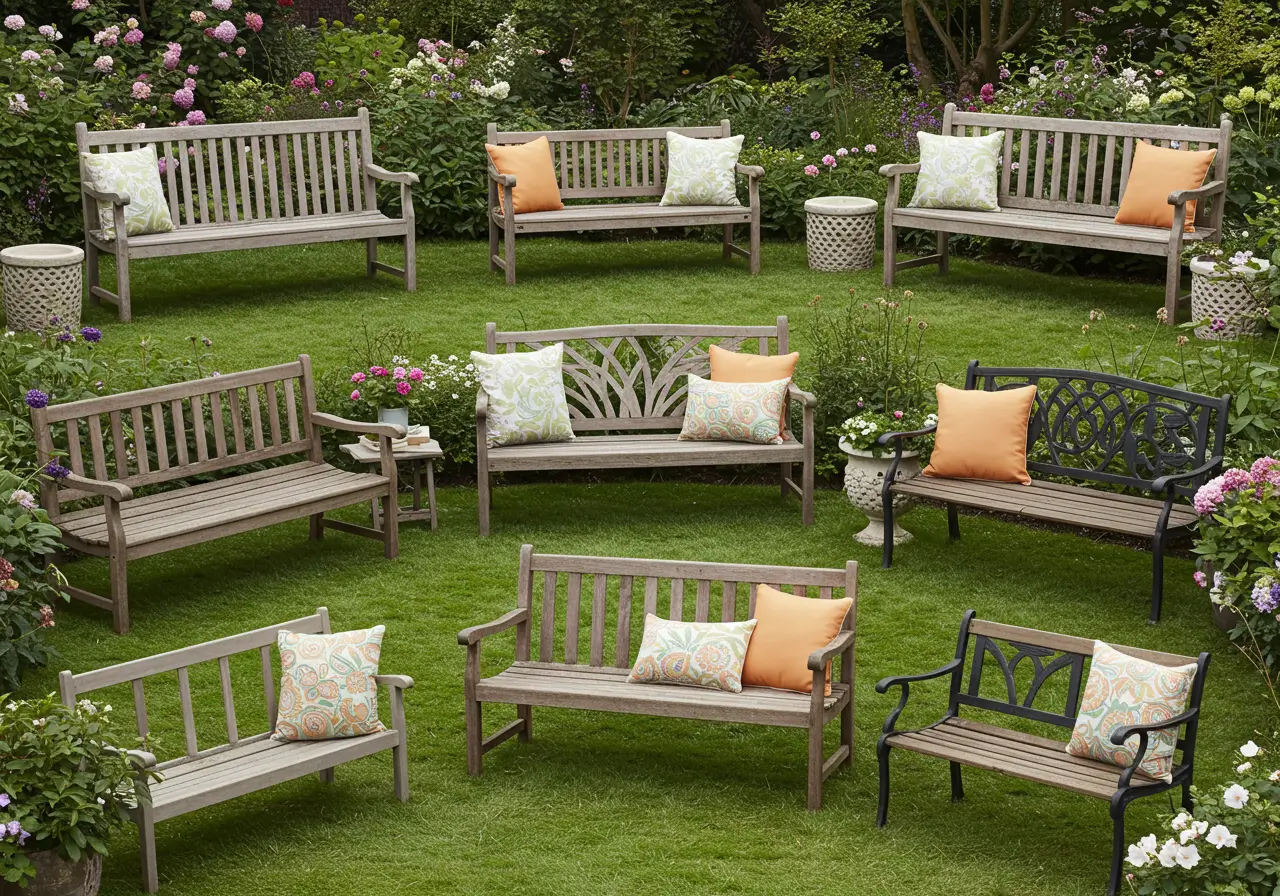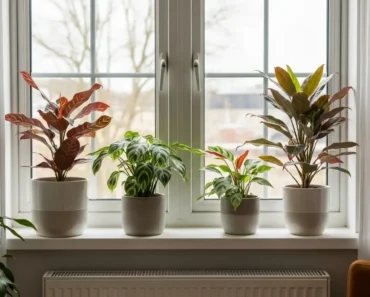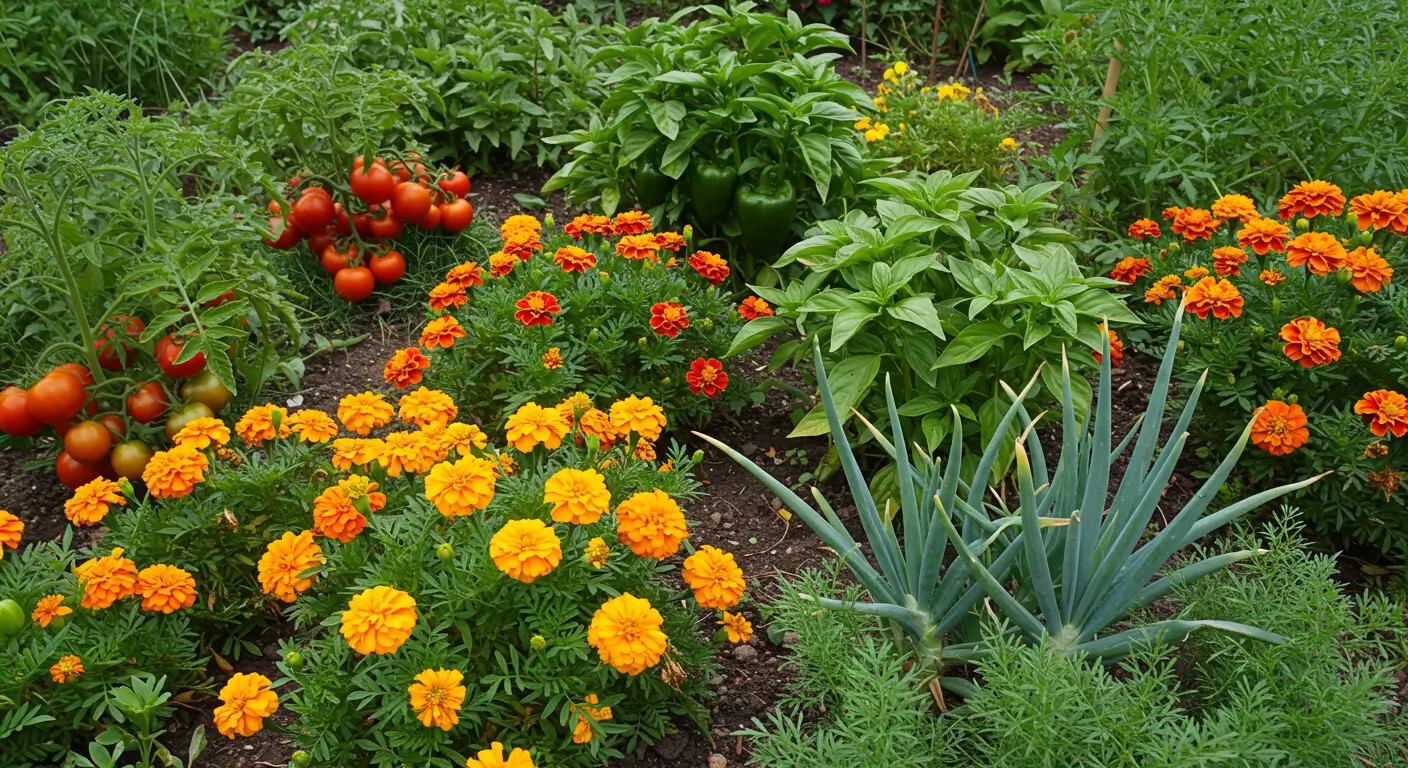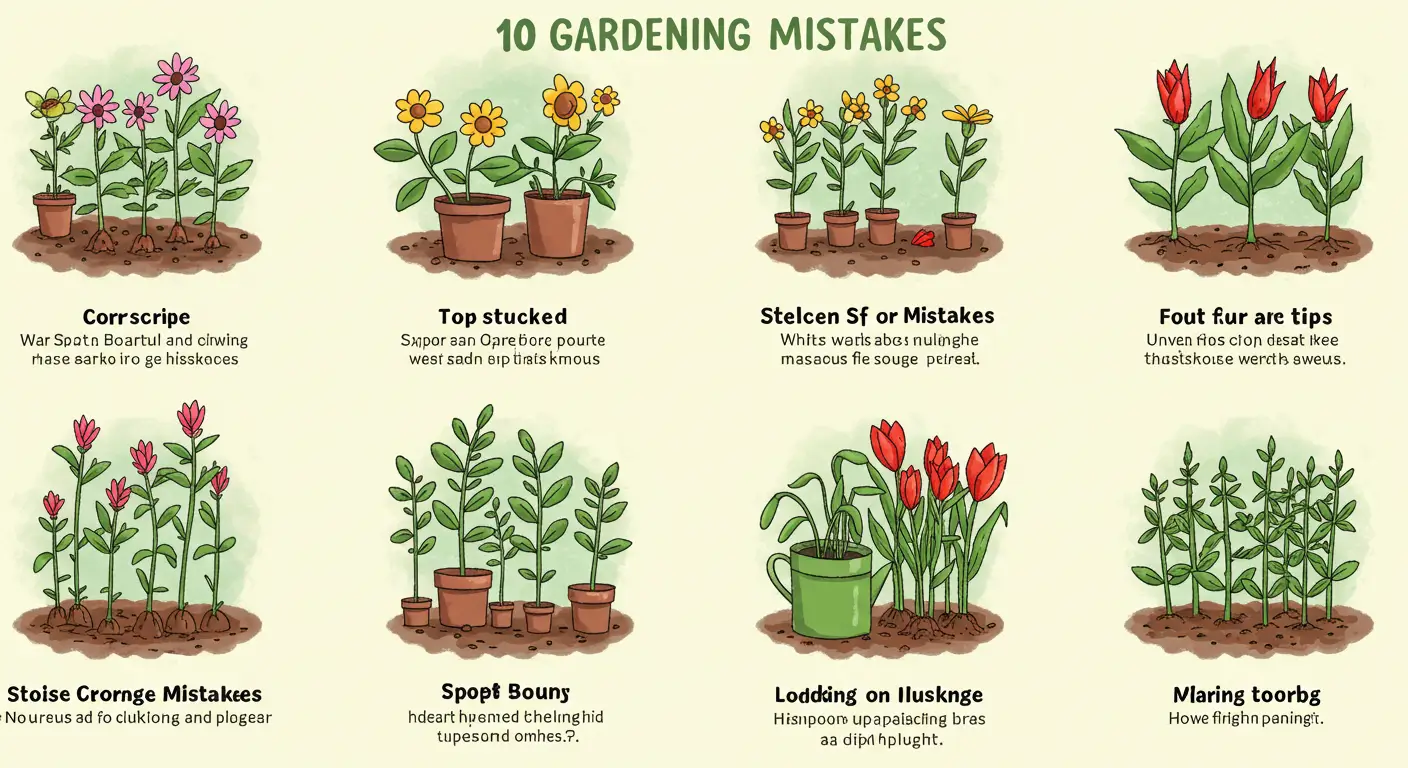Living in a compact apartment, condo, or home with limited outdoor area doesn’t mean sacrificing the joy and benefits of gardening. The solution lies in looking up! Vertical gardening allows you to transform barren walls, tiny balconies, or even sunny indoor spots into thriving green spaces. This guide is packed with DIY vertical gardening ideas specifically designed for small spaces, empowering you to grow herbs, vegetables, flowers, and more, regardless of square footage. Embracing these techniques is a cornerstone of modern urban gardening, making green living accessible to everyone. We will explore creative, budget-friendly, and practical projects you can build yourself, turning your limited space into a productive and beautiful oasis.
These DIY vertical gardening ideas range from simple upcycled projects perfect for beginners to slightly more involved structures offering substantial growing space. We focus on clear instructions, readily available materials, and adaptable designs suitable for balconies, patios, fences, or even indoor walls near a window. Get ready to unleash your creativity and cultivate your own piece of nature, one vertical layer at a time. This exploration will provide not just inspiration, but the practical knowledge needed to succeed.
Why Embrace Vertical Gardening in Urban Environments?
Before diving into the specific projects, let’s appreciate why vertical gardening is such a game-changer, particularly for city dwellers and those with restricted space. The benefits extend far beyond simply finding a place to put plants.
-
Space Maximization: This is the most obvious advantage. Vertical gardens utilize vertical surfaces – walls, railings, fences – effectively multiplying your growing area without increasing the footprint. A small balcony can host a surprising number of plants when you grow upwards.
-
Increased Accessibility: Raising planters off the ground can make gardening easier for individuals with mobility issues, reducing the need for bending or kneeling. Harvesting herbs or tending plants at waist or eye level is much more comfortable.
-
Enhanced Aesthetics: A living green wall adds stunning visual interest to otherwise bland spaces. It can create a focal point, screen unsightly views, or simply bring vibrant life and color to concrete jungles.
-
Potential for Higher Yields: By maximizing space and potentially optimizing light exposure for each plant, vertical systems can sometimes lead to greater yields of herbs, greens, or small fruits compared to traditional containers occupying the same footprint.
-
Improved Air Quality & Microclimate: Plants naturally filter air, absorbing carbon dioxide and releasing oxygen. A concentration of plants in a vertical garden can contribute to cleaner air in the immediate vicinity. They can also provide shade and evaporative cooling, slightly modifying the microclimate on a hot balcony or patio.
-
Privacy Creation: Strategically placed vertical gardens can act as natural privacy screens on balconies or patios, shielding you from neighbors or busy streets.
-
Opportunities for Creativity & Upcycling: Many DIY vertical gardening ideas involve repurposing materials like pallets, bottles, or gutters, promoting sustainability and allowing for unique, personalized designs.
These advantages make vertical gardening an intelligent and rewarding approach for anyone looking to integrate more greenery into their life, proving that limited space is no barrier to a flourishing garden.
Planning Your DIY Vertical Garden: Key Considerations
Successful vertical gardening starts with thoughtful planning. Before you grab your tools, take time to assess your space and needs. Answering these questions will help you choose the right DIY project and set your garden up for success.
Location, Location, Sunlight
Where will your vertical garden live? Consider these factors:
-
Available Surfaces: Do you have a sturdy wall, a balcony railing, a fence, or just floor space for a freestanding vertical structure? The surface dictates the types of systems you can install (hanging, wall-mounted, freestanding).
-
Sunlight Exposure: This is critical. Observe the intended location throughout the day to determine how many hours of direct sunlight it receives. This is often called ‘sun mapping’.
-
Full Sun: 6+ hours of direct sunlight per day. Ideal for most vegetables (tomatoes, peppers, cucumbers if space allows), many herbs (basil, rosemary, thyme), and flowering annuals (petunias, marigolds).
-
Partial Sun/Shade: 4-6 hours of direct sunlight, or dappled light all day. Suitable for leafy greens (lettuce, spinach, kale), some herbs (mint, parsley, chives), and shade-tolerant flowers (begonias, impatiens).
-
Full Shade: Less than 4 hours of direct sunlight. Challenging for most edibles, but some foliage plants, ferns, and certain herbs like mint might tolerate it. Grow lights might be needed for indoor shade spots.
-
-
Wind and Rain Exposure: Balconies or exposed walls can be windy, drying out plants faster. Consider if the location offers some protection or if you need to choose hardier plants or provide windbreaks. Heavy rain can also impact certain structures or soil.
Watering Strategy: Keeping Plants Hydrated
Vertical gardens, especially those with smaller individual planting pockets, can dry out quickly. Plan your watering approach:
-
Manual Watering: Requires regular checking (often daily in hot weather) and careful watering to ensure each plant receives moisture without waterlogging lower levels. A watering can with a long spout or a gentle hose setting works well.
-
Drip Irrigation: A more efficient, automated option, especially for larger systems. A simple drip irrigation kit uses tubes and emitters to deliver water slowly and directly to the base of each plant. This conserves water and ensures consistent moisture. Kits can be connected to a hose bibb and often include timers for full automation. This is highly recommended for busy gardeners or larger installations.
-
Self-Watering Systems: Some DIY or commercial vertical planters incorporate reservoirs that wick water up to the plant roots, reducing watering frequency.
-
Drainage: Absolutely essential! Ensure every container or pocket in your vertical system has drainage holes to prevent water from pooling and causing root rot. Plan where excess water will go – will it drip onto the ground, a patio below, or do you need a collection tray?
Structural Support and Weight
Soil, water, and plants add significant weight. Ensure your chosen location and mounting method can handle the load:
-
Wall Strength: If mounting directly to a wall, ensure it is structurally sound. Brick or concrete walls are ideal. For drywall or siding, locate studs and use appropriate heavy-duty anchors or mounting hardware designed for the expected weight.
-
Railing Capacity: Balcony railings must be sturdy enough to support the weight of hanging planters or systems designed to clamp onto them. Check building regulations or strata rules if applicable.
-
Mounting Hardware: Use weather-resistant screws, hooks, brackets, or wires suitable for outdoor use and rated for the anticipated weight. Stainless steel or galvanized hardware resists rust.
-
Freestanding Stability: For structures like A-frames or tiered planters, ensure they have a stable base and are unlikely to tip over, especially in windy conditions. Weighting the bottom tier can help.
Choosing the Right Plants
Select plants suited to your light conditions, climate, and the specific vertical garden system:
-
Size Matters: Choose plants with relatively small root systems that won’t quickly outgrow their containers. Dwarf varieties of vegetables are often suitable.
-
Growth Habit: Trailing plants (lobelia, sweet potato vine, some strawberries) look great cascading down. Upright plants (herbs, lettuce) work well in individual pockets. Vining plants (beans, cucumbers) need trellis support integrated into the system.
-
Light & Water Needs: Group plants with similar requirements together if possible. Don’t put a sun-loving basil next to a shade-tolerant fern if they share the same watering zone.
-
Good Choices for Beginners: Herbs (mint, chives, oregano, thyme, parsley), leafy greens (lettuce mixes, spinach, arugula), strawberries, edible flowers (pansies, nasturtiums), resilient succulents (if drainage is excellent), and annual flowers (petunias, lobelia, alyssum).
Material Selection: Durability & Aesthetics
Consider the materials for your DIY project:
-
Wood: Offers a natural aesthetic. Use naturally rot-resistant woods like cedar or redwood, or choose heat-treated (HT) pallet wood (avoid chemically treated pallets marked MB). Sealants can extend lifespan but choose non-toxic options if growing edibles.
-
Plastic: Lightweight, durable, and often inexpensive. Includes recycled bottles, PVC pipes, gutters, and commercially made pockets. Ensure plastics are food-safe (check recycling codes 1, 2, 4, or 5) if growing edibles. UV resistance varies; some plastics become brittle over time in direct sun.
-
Metal: Galvanized metal (gutters, cans) resists rust. Can get hot in direct sun, potentially stressing roots. Ensure adequate drainage.
-
Fabric: Geotextile fabric pockets (like those in shoe organizers or specialized grow bags) offer excellent drainage and aeration but can dry out very quickly. Often lightweight. Durability varies with fabric quality.
Inspiring DIY Vertical Gardening Ideas
Now for the fun part! Here are several popular and achievable DIY vertical gardening ideas suitable for small spaces. Choose the one that best fits your skills, budget, space, and style.
1. The Classic Pallet Garden

Concept Explanation
One of the most iconic DIY vertical garden projects. A wooden pallet is stood upright, landscape fabric is used to create pocket troughs on the back and bottom, and plants are inserted into the slatted openings on the front.
Materials Needed
-
Wooden Pallet (Important: Use heat-treated ‘HT’ pallets, avoid chemical ‘MB’ treated ones, especially for edibles)
-
Heavy-duty Landscape Fabric (or weed barrier fabric)
-
Staple Gun (heavy-duty) and Staples
-
Scissors or Utility Knife
-
Measuring Tape
-
Potting Soil (good quality mix suitable for containers)
-
Plants or Seeds
-
Optional: Sandpaper, exterior paint or sealant (non-toxic if growing edibles), mounting brackets/screws.
Step-by-Step Instructions
-
Prepare the Pallet: Inspect the pallet for loose nails or splintered wood. Remove or hammer down any hazards. Sand rough spots if desired. If painting or sealing, do this now and let it dry completely.
-
Measure and Cut Fabric: Decide which side will be the back. Measure the width of the pallet and the depth needed to create planting troughs between the slats. Double the depth measurement to allow fabric to go down and up, creating a pocket. Cut lengths of landscape fabric accordingly. You will likely need several pieces to cover the back and bottom sections between the main support beams.
-
Create Planting Pockets: Lay the pallet face down. Start with the bottom opening. Fold a piece of landscape fabric in half lengthwise to double its strength. Staple one edge securely along the inside back edge of the bottom slat. Pull the fabric down, across the bottom opening, and up the inside front edge of the same opening, creating a trough. Staple the other edge securely to the inside front. Ensure the fabric is taut enough to hold soil but has a bit of give. Use plenty of staples.
-
Continue Upwards: Repeat step 3 for each horizontal opening you intend to plant, working your way up the pallet. Each fabric trough should slightly overlap the one below it on the inside.
-
Cover the Back: Cut a large piece of landscape fabric to cover the entire back of the pallet (over the pockets you just made) and the bottom opening. Staple this securely around all edges of the pallet’s back and bottom, creating a sealed backing. This prevents soil from falling out the back. Double-check that all edges are sealed with staples.
-
Position and Fill: Carefully stand the pallet upright in its final location (lean against a wall or mount securely). It will be heavy once filled. Fill the pockets from the top openings with good quality potting mix. Gently pack it down, ensuring soil fills all the fabric troughs. Water thoroughly – this helps the soil settle. You may need to top up the soil level.
-
Plant: Carefully make small slits in the landscape fabric at the front of each trough where you want to plant (if planting starts/plugs). Gently insert your plants into the soil pockets through the pallet slats or the slits you made. If starting from seed, follow packet instructions. Water again gently after planting.
Pros & Cons
-
Pros: Often uses free/cheap materials, large planting area, rustic aesthetic, relatively sturdy.
-
Cons: Can be heavy, requires careful pallet selection (HT only), soil can dry out quickly, watering lower levels evenly can be tricky without drip irrigation.
Also Read: A UK Guide to Choosing Benches Garden Bench Styles
Best Plants
Herbs, lettuce, strawberries, succulents, shallow-rooted annual flowers (alyssum, lobelia).
2. Gutter Garden (Horizontal or Tiered)

Concept Explanation
Sections of rain gutter are capped at the ends, filled with soil, and mounted horizontally on a wall, fence, or railing. They can be installed individually or tiered in a cascading arrangement.
Materials Needed
-
Vinyl or Metal Rain Gutters (standard K-style is common)
-
Gutter End Caps (matching the gutter profile)
-
Gutter Mounting Brackets or Hangers
-
Screws suitable for your mounting surface (exterior grade)
-
Drill with bits for drainage holes and pilot holes
-
Silicone Sealant (optional, for extra waterproofing at caps)
-
Hacksaw or tin snips (if cutting gutters)
-
Level
-
Potting Soil
-
Plants
Step-by-Step Instructions
-
Cut Gutters (if needed): Determine the desired length for your gutter sections. Cut the gutters to size using a hacksaw (for vinyl) or tin snips (for metal). Smooth any rough edges.
-
Attach End Caps: Securely attach an end cap to each end of the gutter sections. Follow the manufacturer’s instructions – some snap on, others might require sealant or screws for a watertight fit (though slight leakage isn’t usually an issue here unless positioned above something sensitive).
-
Drill Drainage Holes: Turn the gutter sections upside down. Drill several small drainage holes (approx. 1/4 inch or 6mm diameter) along the bottom of each gutter section, spaced every 6-12 inches. This is crucial for preventing waterlogging.
-
Plan Mounting: Decide on the placement on your wall, fence, or railing. If creating tiers, plan the spacing between rows, ensuring upper tiers won’t completely block light from lower ones. Use a level to mark where the mounting brackets will go to ensure the gutters sit horizontally.
-
Install Mounting Brackets: Securely attach the gutter mounting brackets to the wall or fence using appropriate screws. Ensure they are anchored into studs or solid material if necessary. Follow bracket spacing recommendations for the gutter type.
-
Mount Gutters: Place the prepared gutter sections into the mounted brackets. They should snap or clip securely into place.
-
Fill with Soil: Fill the gutter troughs with good quality potting mix, leaving about an inch of space at the top.
-
Plant: Plant your chosen herbs, greens, or flowers directly into the soil. Water gently.
Pros & Cons
-
Pros: Relatively inexpensive, readily available materials, neat appearance, good for shallow-rooted plants, easy to water (especially single rows).
-
Cons: Limited soil depth restricts plant choices, metal gutters can get hot, requires secure mounting, plastic can become brittle over time.
Best Plants
Lettuce, spinach, radishes, strawberries, herbs (chives, oregano, thyme), alyssum, lobelia, succulents.
3. Upcycled Plastic Bottle Tower

Concept Explanation
Large plastic bottles (like 2-liter soda bottles) are modified and stacked vertically on top of each other, creating individual planting pockets. Often hung or supported by a central dowel.
Materials Needed
-
Plastic Bottles (2-liter size works well, clean and labels removed) – Quantity depends on desired height.
-
Strong Scissors or Utility Knife
-
Drill or Soldering Iron (for drainage/hanging holes)
-
Strong Wire or Rope (for hanging) OR Wooden Dowel/Rebar (for central support)
-
Washers (if using central support)
-
Potting Soil
-
Plants (small starts or seeds)
Step-by-Step Instructions (Hanging Version)
-
Prepare Bottles: Cut the bottom off each plastic bottle (about 1-2 inches up from the base). Keep the bottle caps ON for now on all but the very bottom bottle.
-
Create Planting Windows (Optional but Recommended): On the sides of each bottle (except perhaps the top one), cut out small windows or openings where plants will grow out. Leave enough structure for rigidity.
-
Make Drainage/Stacking Holes: For all bottles EXCEPT the very bottom one, carefully pierce small drainage holes in the bottle cap using a drill or soldering iron. These holes allow water to drip down to the bottle below.
-
Make Hanging Holes: Near the top rim of the TOP bottle, make two or three sturdy holes for threading the hanging wire or rope.
-
Assemble the Tower:
-
Take the BOTTOM bottle (cap OFF, bottom cut off). Fill it partway with soil.
-
Take the NEXT bottle up (cap ON with drainage holes, bottom cut off). Invert it and carefully push the neck (with cap) into the open top of the bottom bottle. It should fit snugly. Add soil to this second bottle.
-
Repeat this process, stacking bottles by inserting the neck of one into the open base of the one below it, adding soil as you go.
-
-
Plant: Plant small seedlings or seeds into the soil through the side windows (if made) or into the top of each bottle section before stacking the next one.
-
Attach Hanger: Thread strong wire or rope through the holes in the top bottle and secure it for hanging.
-
Watering: Water slowly from the top bottle. Water will gradually drip down through the drainage holes in the caps to the lower levels.
(Note: For a central support version, drill holes through the center of the caps and bases large enough for the dowel/rebar. Stack bottles onto the support, using washers between bottles if needed for stability.)
Pros & Cons
-
Pros: Excellent use of recycled materials, very low cost, lightweight, modular design.
-
Cons: Small planting pockets limit plant size, plastic can degrade in sunlight over time, watering needs careful attention to ensure even distribution, aesthetics might not appeal to everyone.
Best Plants
Herbs (especially trailing ones like thyme or oregano), small lettuce varieties, strawberries, small annual flowers.
4. Fabric Shoe Organizer Garden

Concept Explanation
An over-the-door fabric shoe organizer, typically made of canvas or non-woven fabric, is repurposed as a multi-pocket vertical planter.
Materials Needed
-
Fabric Shoe Organizer (choose one made of sturdy, preferably breathable fabric; avoid clear plastic fronts)
-
Strong Hooks or Mounting Bar
-
Screws/Anchors (if mounting to a wall)
-
Potting Soil
-
Plants (small starts)
-
Optional: Grommet kit (to reinforce hanging holes), additional landscape fabric (to line pockets if fabric feels thin).
Step-by-Step Instructions
-
Prepare Organizer: Inspect the shoe organizer. If the hanging holes seem weak, reinforce them with metal grommets using a grommet kit. If the pocket fabric feels flimsy, consider lining each pocket with an extra layer of landscape fabric.
-
Ensure Drainage: Most fabric organizers are breathable, allowing excess water to weep through. If the fabric seems very dense or waterproof, carefully poke a few small drainage holes in the bottom of each pocket.
-
Mount: Hang the organizer securely from its grommets using strong hooks attached to a wall, fence, or sturdy structure. Ensure the hooks/structure can support the weight when filled with wet soil and plants. Use appropriate anchors if mounting directly to drywall.
-
Fill Pockets: Carefully fill each pocket with good quality potting mix, leaving some room at the top.
-
Plant: Gently place one small plant start into each pocket. Firm the soil around the roots.
-
Water: Water each pocket gently and thoroughly. Be aware that water may drip from upper pockets onto lower ones, and excess water will likely drip from the bottom pockets – plan accordingly for what’s underneath.
Pros & Cons
-
Pros: Very easy setup, inexpensive, lightweight, provides many planting pockets in a small footprint, good aeration for roots.
-
Cons: Fabric pockets dry out extremely quickly (requires frequent watering), durability varies greatly with material quality, limited soil volume per pocket, potential for messy dripping.
Best Plants
Herbs, lettuce, strawberries, succulents (if watering is carefully managed), small annual flowers like alyssum or lobelia.
5. Mason Jar Herb Garden

Concept Explanation
Glass mason jars are mounted individually or onto a piece of wood, creating small, attractive planters, ideal for an indoor kitchen herb garden near a window.
Materials Needed
-
Mason Jars (pint or quart size)
-
Pipe Clamps (hose clamps) sized to fit around the jars
-
Piece of Wood/Board (cut to desired size)
-
Screws (short enough to go through clamp band into wood without poking through front)
-
Screwdriver
-
Picture Hanging Hardware (heavy-duty) OR screws/anchors for direct wall mounting
-
Small Pebbles or Gravel (for drainage layer)
-
Activated Charcoal (optional, helps keep soil fresh)
-
Potting Soil
-
Herb Plants or Seeds
-
Optional: Paint or stain for the wood board.
Step-by-Step Instructions
-
Prepare Board: Sand the wood board smooth. Paint or stain if desired and let dry completely.
-
Position Clamps: Arrange the pipe clamps on the board where you want the jars to sit. Ensure even spacing.
-
Attach Clamps: Carefully screw the pipe clamps onto the board. Place a short screw through the metal band of the clamp (not the tightening mechanism part) and into the wood. Use screws that are secure but won’t penetrate the front of the board. Attach each clamp securely.
-
Add Hanging Hardware: Attach heavy-duty picture hanging hardware to the back of the board OR pre-drill holes for direct wall mounting later.
-
Prepare Jars for Planting: Since jars lack drainage holes, create a drainage layer. Place a 1-inch layer of pebbles or gravel at the bottom of each jar. Optional: Add a thin layer of activated charcoal on top of the pebbles to help filter water and prevent odors.
-
Add Soil & Plants: Fill the jars with potting soil, leaving space at the top. Plant your herbs.
-
Mount Jars: Carefully slide each planted mason jar into a pipe clamp on the board. Tighten the clamp screw mechanism until the jar is held firmly but not overtightened (to avoid cracking the glass).
-
Mount Board: Hang the entire assembly on the wall using the picture hardware or mount directly using screws and anchors appropriate for your wall type.
-
Water Carefully: Water sparingly, aiming only to moisten the soil. Tip the jar slightly to check if water pools excessively in the pebble layer. Avoid overwatering, as there’s no drainage hole.
Pros & Cons
-
Pros: Attractive, customizable look, great for indoor herbs, uses common materials, keeps herbs easily accessible in the kitchen.
-
Cons: Lack of drainage requires very careful watering, limited root space, glass can break, pipe clamps can rust over time if not stainless steel.
Best Plants
Small herbs that tolerate slightly restricted roots and careful watering: Chives, mint, oregano, parsley, thyme, basil (may need repotting sooner).
6. Leaning Ladder Planter

Concept Explanation
A freestanding A-frame or leaning ladder structure holds multiple planter boxes or pots on its rungs or shelves. Can be built from scratch or by repurposing an old wooden ladder.
Materials Needed (Simple A-Frame Version)
-
Wood Boards (e.g., 1×4 or 1×6 lumber) for legs and rungs/shelves
-
Wood Screws (exterior grade)
-
Saw
-
Drill
-
Measuring Tape & Pencil
-
Level
-
Planter Boxes or Pots
-
Optional: Hinges (for A-frame), exterior paint/sealant.
Step-by-Step Instructions (Simplified – Leaning Style)
-
Cut Legs: Cut two long pieces of wood for the main vertical supports (legs) of the ladder. Angle the bottom ends slightly so they sit flat on the ground when leaned.
-
Cut Rungs/Shelves: Cut several pieces of wood for the horizontal rungs or shelves. These should be wide enough to securely hold your chosen planter boxes or pots. You might want to make lower shelves slightly longer/wider than upper ones for stability and aesthetics.
-
Assemble Ladder: Lay the two legs parallel on a flat surface. Position the rungs/shelves between them at desired intervals. Ensure they are level. Pre-drill pilot holes and attach the rungs/shelves to the legs using exterior wood screws.
-
Finish (Optional): Sand any rough edges. Apply exterior paint or sealant if desired and let dry.
-
Position & Plant: Lean the ladder securely against a sturdy wall or fence. Place your planter boxes or pots (already planted) onto the rungs/shelves. Ensure they sit securely.
(Note: An A-frame involves building two such ladder sides and connecting them at the top with hinges or fixed screws, making it freestanding).
Pros & Cons
-
Pros: Freestanding options don’t require wall mounting, customizable size and number of tiers, allows use of standard pots/planters with good drainage, attractive display.
-
Cons: Takes up more floor space than wall-mounted options, requires basic woodworking skills/tools, repurposed ladders need careful stability checks.
Best Plants
Almost anything suitable for containers, depending on pot size: Herbs, greens, flowers, strawberries, even dwarf varieties of peppers or tomatoes on lower, larger shelves.
7. Trellis or Wall Mesh Garden
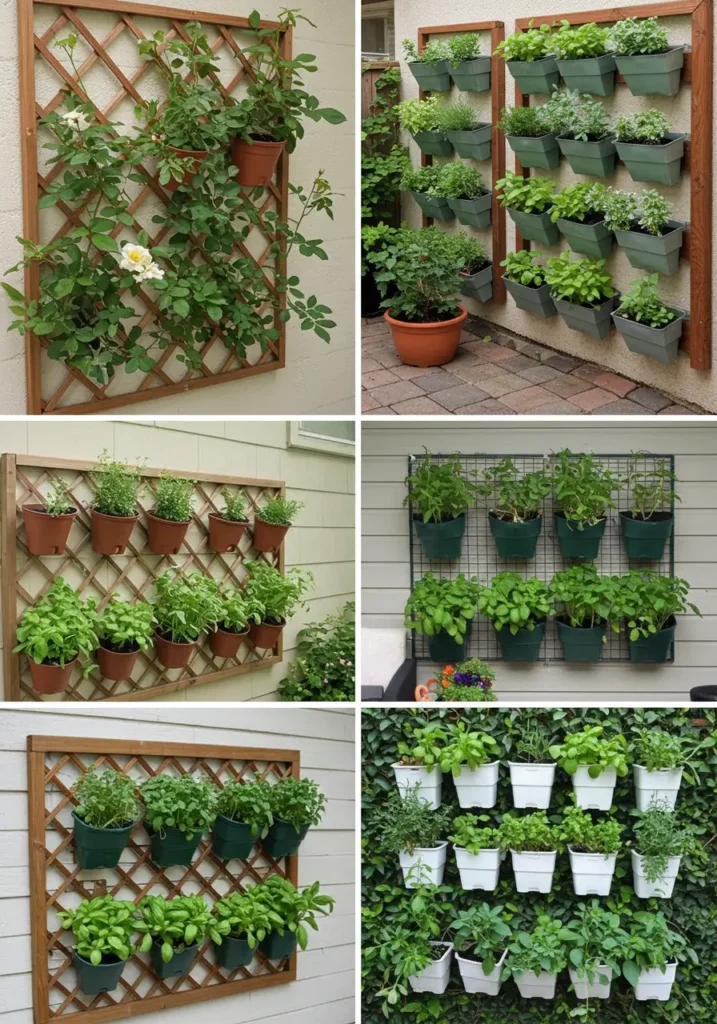
Concept Explanation
A trellis, wire mesh panel, or even cattle panel is mounted slightly off a wall or fence. Pots with hangers, specialized clip-on planters, or vining plants grown from containers at the base are attached to or trained up the structure.
Materials Needed
-
Trellis Panel (wood or metal), Wire Mesh Panel, or Cattle Panel
-
Mounting Hardware (spacers/blocks to hold panel off the wall, screws/anchors)
-
Pots with Wire Hangers OR Clip-on Planters OR Standard Pots (for base planting)
-
Zip Ties, Twine, or Plant Clips (for training vines)
-
Plants (hanging/trailing types, vining types, or standard plants in attached pots)
Step-by-Step Instructions
-
Mount the Trellis/Mesh: Using appropriate screws and anchors, mount the trellis or mesh panel to your chosen wall or fence. Crucially, use spacers (e.g., small wood blocks) between the panel and the wall so there’s a gap for air circulation and room for hooks/clips. Ensure it’s securely mounted.
-
Prepare Planters: If using standard pots with wire hangers, ensure the hangers are secure. If using clip-on planters, check their mechanism. If growing vines from the base, place large containers at the foot of the trellis.
-
Attach Planters / Plant Vines: Hang the pots onto the trellis grid or clip on the specialized planters. Arrange them for aesthetics and light exposure. Plant vining plants (beans, cucumbers, peas, some tomatoes) in the base containers.
-
Train Vines (if applicable): As vining plants grow, gently guide them onto the trellis using twine, zip ties (loosely!), or plant clips.
-
Water: Water individual pots as needed. Base containers for vines will require regular watering.
Pros & Cons
-
Pros: Highly customizable layout, excellent for vining plants, good air circulation around plants, can create a full ‘green wall’ effect, uses standard pots.
-
Cons: Requires secure mounting, cost of trellis/mesh can vary, individual pots still need watering, weight of multiple pots needs consideration.
Best Plants
Vining vegetables (pole beans, cucumbers, peas, indeterminate tomatoes), trailing flowers, herbs in hanging pots, strawberries in hanging pots.
Essential Care for Your Vertical Garden
Vertical gardens require slightly different care than in-ground beds due to their containerized nature. Consistent attention is key to keeping your upward garden thriving.
Watering Techniques Revisited

As mentioned, vertical gardens often dry out faster than traditional pots. Factors include smaller soil volumes, increased exposure to sun and wind, and porous materials (like fabric).
-
Check Frequently: Check soil moisture daily, especially during hot or windy weather. Stick your finger about an inch into the soil – if it feels dry, it’s time to water.
-
Water Thoroughly: When you water, do so until water begins to drain from the bottom holes. This ensures the entire root zone gets wet.
-
Top-Down Challenges: In stacked systems (like bottle towers or some pallet designs), ensure lower levels receive enough water. Water slowly from the top. A drip irrigation system with emitters at each level is often the most effective solution for multi-tiered setups.
-
Morning Watering: Watering in the morning is generally best. It allows plants to hydrate before the heat of the day and lets foliage dry, reducing the risk of fungal diseases.
Fertilizing Needs: Feeding Container Plants
Potting mix contains limited nutrients, and frequent watering washes them away over time. Regular feeding is essential for productive vertical gardens.
-
Liquid Fertilizer: Diluted liquid fertilizer (like fish emulsion or a balanced synthetic blend) applied every 2-4 weeks during the growing season provides readily available nutrients. Follow product instructions for dilution rates.
-
Slow-Release Fertilizer: Granular slow-release fertilizer can be mixed into the potting soil at planting time or top-dressed periodically. These release nutrients gradually over several weeks or months.
-
Compost Tea: A nutrient-rich liquid made by steeping compost in water can provide a gentle boost of nutrients and beneficial microbes.
-
Observe Your Plants: Yellowing leaves, slow growth, or poor flowering/fruiting can indicate nutrient deficiencies. Adjust feeding accordingly.
Pest and Disease Management
While vertical gardens can sometimes have fewer soil-borne pests, they are still susceptible to common garden issues. Good air circulation helps, but vigilance is key.
-
Inspect Regularly: Check leaves (including undersides) and stems frequently for signs of pests like aphids, spider mites, or whiteflies, or diseases like powdery mildew.
-
Promote Air Circulation: Avoid overcrowding plants. Prune as needed to allow air to move freely between leaves. This helps prevent fungal diseases.
-
Manual Removal: Small pest infestations can often be managed by hand-picking or wiping pests off leaves.
-
Insecticidal Soap or Neem Oil: For larger infestations, insecticidal soap or neem oil sprays are effective organic options. Apply according to label directions, usually in the cooler parts of the day.
-
Healthy Soil & Plants: Properly watered and fed plants are naturally more resilient to pests and diseases.
Pruning and Harvesting
Regular pruning and harvesting keep plants productive and healthy.
-
Harvest Herbs Often: Regularly snipping leaves from herbs encourages bushier growth and prevents them from flowering prematurely (bolting).
-
Prune for Shape & Airflow: Trim any dead, yellowing, or diseased leaves promptly. Prune plants to maintain a manageable size within their containers and improve air circulation.
-
Deadheading Flowers: Removing spent flower blossoms encourages plants to produce more flowers rather than setting seed.
-
Harvest Vegetables at Peak: Pick leafy greens, beans, strawberries, etc., when they reach the desired size for the best flavor and to encourage further production.
Troubleshooting Common Vertical Garden Issues
Even with careful planning, you might encounter some challenges. Here’s how to address common problems:
Poor Drainage / Waterlogging
Symptoms: Yellowing leaves (especially lower ones), wilting despite wet soil, root rot (mushy, brown roots), moldy soil surface.
Solutions: Ensure drainage holes are present and not blocked. Use a well-draining potting mix (avoid heavy garden soil). Water less frequently, allowing the top inch of soil to dry out between waterings. For systems without drainage (like mason jars), water extremely carefully and consider repotting into containers with holes.
Uneven Growth or Drying
Symptoms: Plants at the top thrive while lower ones struggle, or one side dries out faster than the other.
Solutions: Ensure even watering – drip irrigation is ideal for multi-tiered systems. Rotate freestanding units periodically if light exposure is uneven. Check if certain materials (like fabric pockets at the top) are drying faster and adjust watering frequency for those sections. Ensure lower plants aren’t excessively shaded by upper ones.
Structural Instability
Symptoms: Leaning structures, loose mountings, sagging gutters.
Solutions: Reinforce leaning structures (add weights to base, secure to wall). Use stronger mounting hardware appropriate for the weight. Ensure screws are in studs or use robust anchors. Add more support brackets for long gutter sections. Choose lighter-weight potting mixes if weight is a major concern.
Soil Drying Out Too Quickly
Symptoms: Plants wilting daily, soil pulling away from container edges.Solutions: Water more frequently. Apply a layer of mulch (shredded bark, straw, coco coir) to the soil surface to reduce evaporation. Consider incorporating water-retaining crystals into the potting mix (use sparingly according to instructions). Choose planters made from less porous materials if possible. Group planters together to create a more humid microclimate.
Beyond the Basics: Enhancing Your Vertical Garden
Once you’ve mastered the basics, consider adding features to enhance your vertical garden’s beauty and functionality:
Incorporating Lighting
For indoor gardens with insufficient natural light, supplement with LED grow lights specifically designed for plants. Outdoors, solar-powered string lights or spotlights can be woven through or directed at your vertical garden for beautiful nighttime ambiance.
Adding Artistic Elements
Paint your wooden structures or pots in coordinating colors. Choose decorative containers. Stencil patterns onto pallet boards. Add small garden art elements or wind chimes nearby. Let your vertical garden reflect your personal style.
Integrating Automated Systems
As mentioned, drip irrigation systems with automatic timers take the guesswork out of watering, ensuring consistency even when you’re busy or away. These range from simple battery-operated timers to more complex smart systems controlled via apps.
Grow Upwards and Thrive
Limited space should never limit your gardening aspirations. DIY vertical gardening offers a world of possibilities for transforming small balconies, patios, walls, and indoor corners into productive and beautiful green havens. From the rustic charm of a pallet garden to the neat efficiency of a gutter system or the creative upcycling of bottle towers, there’s a project to suit every skill level, budget, and style. By carefully planning your location, choosing appropriate plants, providing consistent care, and embracing a bit of DIY spirit, you can successfully cultivate a thriving vertical garden.
These vertical gardening ideas are more than just space-saving solutions; they are invitations to connect with nature, enhance your surroundings, and enjoy the simple pleasure of growing your own food or flowers, right where you live. Embrace the vertical dimension and watch your urban gardening dreams take flight.
FAQs About DIY Vertical Gardens
What are the most budget-friendly DIY vertical gardening ideas?
Projects using upcycled materials are typically the cheapest. Plastic bottle towers and pallet gardens (if you can source free, safe HT pallets) often have the lowest material costs. Repurposing items like old shoe organizers or ladders can also be very economical.
How long do DIY vertical gardens typically last?
Durability varies greatly depending on materials and climate. Well-sealed, rot-resistant wood structures can last many years. Untreated wood or basic fabric organizers might only last 1-3 seasons in harsh weather. UV-resistant plastic gutters or containers generally last longer than standard plastic bottles exposed to direct sun. Regular maintenance helps extend lifespan.
Can these vertical gardening ideas be used indoors?
Yes, many can, with modifications. Mason jar gardens are ideal indoors. Pallet gardens, ladder planters, or trellis systems can work if placed near a very sunny window or supplemented with grow lights. Crucially, ensure any indoor system has a way to manage water drainage (e.g., placing trays underneath, using self-contained planters, or watering extremely carefully).
What are the easiest plants for a beginner to grow in a vertical garden?
Leafy greens (like loose-leaf lettuce, spinach, arugula), resilient herbs (mint, chives, oregano, thyme), strawberries, and hardy annual flowers (alyssum, lobelia, pansies) are generally forgiving and adapt well to container life with limited root space. Choose varieties known to be compact.
How often do I really need to water my vertical garden?
There’s no single answer, as it depends on plant type, container size/material, weather (sun, wind, heat), and soil mix. However, expect to water more frequently than in-ground gardens or large pots. Daily checking is essential in summer. Small pockets or fabric containers might need water once or even twice a day in peak heat, while larger troughs might go a day or two. Always check the soil moisture before watering.

